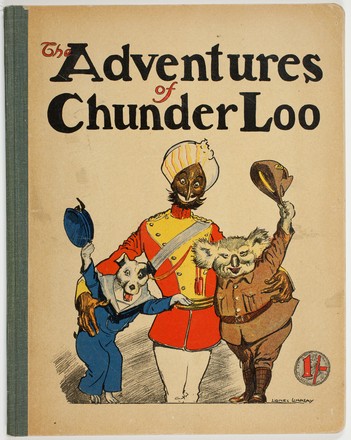
The adventures of "Chunder Loo"
1916
Printed book
[Sydney]: Blyth & Platt, [1916]
Bequest of Sir William Dixson, 1952
Q91/57
Printed book
[Sydney]: Blyth & Platt, [1916]
Bequest of Sir William Dixson, 1952
Q91/57
In 1909 the boot polish company Blyth and Platt launched a series of advertisements in the form of a cartoon by Lionel Lindsay with rhyming verse by the journalist and writer Ernst O’Farrell. By 1916 the cartoons were so popular that the company published them in a single volume.
Sir William Dixson was a great admirer of Lindsay’s artwork and maintained a standing order for all Lindsay’s engravings. He was given this copy of Chunder Loo by Lindsay himself: a dedication at the top of the page reads: ‘To William Dixson Esq., with the compliments of the person responsible for drawings’.
Considered too ephemeral for serious collecting, editions of this volume are rare. As a presentation copy to Sir William, this volume is unique.


 Back to list
Back to list